Building Manager and Leadership Fitness
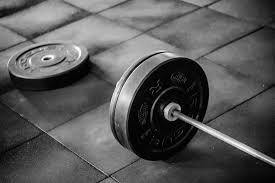 Before entering the field of professional and organizational development, I was a choreographer and professional dancer. During these years I spent hours everyday standing at a ballet barre executing a series of exercises strategically designed to hone balance, agility, strength and endurance.
Before entering the field of professional and organizational development, I was a choreographer and professional dancer. During these years I spent hours everyday standing at a ballet barre executing a series of exercises strategically designed to hone balance, agility, strength and endurance.
This deliberate approach to fitness is critical to the health of a dancer. If a dancer is stronger than he or she is flexible, a muscle will be pulled. If flexibility surpasses strength, overstretched ligaments result. And if training for balance is neglected, a dancer is vulnerable to serious falls.
Watch this clip here of the famed ballet dancer, Mikhail Baryshnikov, as he displays this well-honed fitness (https://www.youtube.com/watch?v=ajWpEAhj2uY). His athleticism and artistry are dependent on rigorous training for balance, physical agility, extreme strength and endurance.
In today’s fast-paced and global economy, the workplace requires a parallel need for leadership and managerial fitness in each of these domains.
Today, as a leader and/or manager you are asked to balance competing demands inherent in global markets. You’re expected to balance the needs of a diverse workforce. You’re required to address the conflicting priorities of challenging work schedules and personal lives, and you must navigate the push and pull of rapidly changing technology.
What pulls you off BALANCE?
Do you find yourself dealing with technology that becomes obsolete in just a few short years, managing a workforce ranging from Baby Boomers to Generation Z, or communicating across intercontinental time zones? These are just a few of the norms that require agility in terms of how we manage both people and processes. Developing this agility is arguably one of the most significant challenges leaders face compared to 30 years ago.
Where do you need greater AGILITY?
Professional strength takes many forms. It involves the ability to influence and persuade; the capacity to comport yourself in a commanding way; to communicate with power and authority; to galvanize energy until a tipping point of momentum is reached; and to stand strong in a storm and not falter in your commitment.
Resilience is at the heart of building professional strength, and often it’s when we’re at our breaking point that we develop the muscle and fortitude needed for effective leadership.
What will STRONG look like for you in 2020?
Jim Collins, author of bestselling books Good to Great and Great by Choice, researched organizations across industries that outperformed their competitors by a factor of 10 to see what competencies led to success. One of the findings was that companies that had clear upper and lower limits of activity– to ensure they pushed ahead but not so much that they became overextended – were more likely to endure good times and bad. It’s similar on a personal level. Knowing your limits to keep you moving forward without the risk of burning out, are key to achieving personal and professional goals – whether it’s writing at least 500 words a day, but no more than a chapter a week of that novel aching to be born, or running at least one mile a day, but no more than 5, to improve cardio-vascular health.
What are your upper and lower levels of activity for professional and personal ENDURANCE?
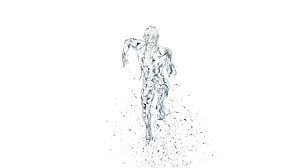
Being able to pivot your company’s direction in reaction to new technology, include diverse perspectives for a balanced view, and do the heavy lifting to get a startup going are just a few of the fitness abilities needed to thrive in the world of work.
My Australian colleague, Dr. Annette Watkins, and I are excited to facilitate BASE Camp for Leaders and Managers at Purdue University’s International Council of Purdue Women’s Conference on April 1st, 2020, where we will explore strategies for building balance, agility, strength and endurance.
We’d love to hear your thoughts to the questions posted above! If you’d like to share them, please email me at Maureenbreeze@cultivage.com.
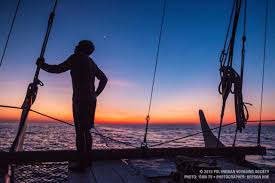 For centuries, native practitioners of the Polynesian art, ‘wayfinding,’ traveled from island to island by honing their attention on the world around them. From canoes, they gathered information from the swell of the tides, the direction and temperature of the wind, the flight of birds, and the stars in the sky. They masterfully attended to the rich, yet subtle clues in their environment to navigate unchartered territory.
For centuries, native practitioners of the Polynesian art, ‘wayfinding,’ traveled from island to island by honing their attention on the world around them. From canoes, they gathered information from the swell of the tides, the direction and temperature of the wind, the flight of birds, and the stars in the sky. They masterfully attended to the rich, yet subtle clues in their environment to navigate unchartered territory. The wayfinders were masters at using their deep level attention to gather data for informed decision making. Today, there’s a huge push for collecting big data to manage societal decisions ranging from pricing to production to policy. However, we often neglect gathering personal data from our internal systems to inform our intuition and cognitive decision-making abilities. In fact, a new company, Node, believes it has created artificial intuition, and is selling technology that claims to capture the ‘human sensation of having a hunch.” According to an article in Fortune magazine, the technology will be used to help managers make business decisions.
The wayfinders were masters at using their deep level attention to gather data for informed decision making. Today, there’s a huge push for collecting big data to manage societal decisions ranging from pricing to production to policy. However, we often neglect gathering personal data from our internal systems to inform our intuition and cognitive decision-making abilities. In fact, a new company, Node, believes it has created artificial intuition, and is selling technology that claims to capture the ‘human sensation of having a hunch.” According to an article in Fortune magazine, the technology will be used to help managers make business decisions. Engaging in deep focus and reflection isn’t always easy. It requires energy and commitment. In a study by the National Institute of Health, researchers scanned the brains of over 50 executives as they engaged in deep-level exploratory thinking. This deep-level thinking activated the participants’ executive centers in the brain – the region responsible for controlling attention and one that requires intentional focus. When participants engaged in surface-oriented thinking, the brain region that processes anticipation and reward was activated. This region is known as the pleasure pathway or reward center and explains why we often prefer answering easy emails over writing that complicated report. The science confirms that thinking deeply involves effort and focused attention. However, attuning ourselves in this manner brings a wealth of information regarding our physiological responses, energy, moods, curiosities, and inner knowledge. It fuels an awareness that serves as an internal compass, calibrated to our unique make-up that can guide us through transition.
Engaging in deep focus and reflection isn’t always easy. It requires energy and commitment. In a study by the National Institute of Health, researchers scanned the brains of over 50 executives as they engaged in deep-level exploratory thinking. This deep-level thinking activated the participants’ executive centers in the brain – the region responsible for controlling attention and one that requires intentional focus. When participants engaged in surface-oriented thinking, the brain region that processes anticipation and reward was activated. This region is known as the pleasure pathway or reward center and explains why we often prefer answering easy emails over writing that complicated report. The science confirms that thinking deeply involves effort and focused attention. However, attuning ourselves in this manner brings a wealth of information regarding our physiological responses, energy, moods, curiosities, and inner knowledge. It fuels an awareness that serves as an internal compass, calibrated to our unique make-up that can guide us through transition.

 Retreating – whether through a ten minute morning ritual, a three-hour workshop, or a multi-day adventure – provides a place of calm in the midst of the daily fray. It’s an opportunity to step back and assess what’s in front of you. Just like an American football quarter back receives the ball and retreats several steps behind the line of scrimmage to assess options for advancing the ball forward, so too can you step back to get a better perspective of what options lay ahead.
Retreating – whether through a ten minute morning ritual, a three-hour workshop, or a multi-day adventure – provides a place of calm in the midst of the daily fray. It’s an opportunity to step back and assess what’s in front of you. Just like an American football quarter back receives the ball and retreats several steps behind the line of scrimmage to assess options for advancing the ball forward, so too can you step back to get a better perspective of what options lay ahead. The process of reinvention differentiates a simple situational change from a deeper level transition. Whether it’s a new mindset, a perspective, or belief about yourself, reinvention on a psychological level is at the heart of transforming who you are. However, new mindsets, perspectives, and beliefs are often reflected externally and may manifest in how you dress and express yourself in the external world.
The process of reinvention differentiates a simple situational change from a deeper level transition. Whether it’s a new mindset, a perspective, or belief about yourself, reinvention on a psychological level is at the heart of transforming who you are. However, new mindsets, perspectives, and beliefs are often reflected externally and may manifest in how you dress and express yourself in the external world. Launching life in a different direction with a new sense of self takes effort, and sustaining a new trajectory requires significant energy. A critical, and often overlooked component of transition is this element of managing your energy.
Launching life in a different direction with a new sense of self takes effort, and sustaining a new trajectory requires significant energy. A critical, and often overlooked component of transition is this element of managing your energy.
 Although I was quite young and the experience not earth shattering, it did introduce me to the dynamic cycle of transition and transformation. Once a linear thinker and passionate about numbers and the concrete world, I became eager to embrace ambiguity. The mysteries of life that evaded equations and analysis suddenly inspired me to create art and explore life from a new perspective. My career choice and my life story shifted as a result.
Although I was quite young and the experience not earth shattering, it did introduce me to the dynamic cycle of transition and transformation. Once a linear thinker and passionate about numbers and the concrete world, I became eager to embrace ambiguity. The mysteries of life that evaded equations and analysis suddenly inspired me to create art and explore life from a new perspective. My career choice and my life story shifted as a result.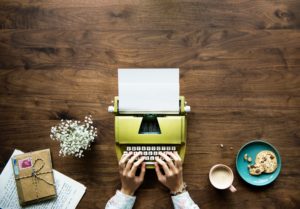
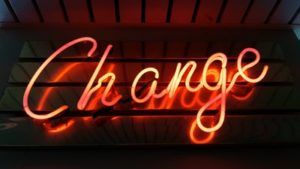
 Transitions can be spurred by many things including marriage and divorce, a loss of a job, the desire for a new career, boredom, health issues, financial events, the birth of children, a death, or an empty nest. Sometimes the need for transition comes after great accomplishments. Other times, the call for transition comes from a quiet, almost inaudible voice.
Transitions can be spurred by many things including marriage and divorce, a loss of a job, the desire for a new career, boredom, health issues, financial events, the birth of children, a death, or an empty nest. Sometimes the need for transition comes after great accomplishments. Other times, the call for transition comes from a quiet, almost inaudible voice. Ultimately transition involves choices that when made consciously can impact how life unfolds through challenging and ambiguous times. In his novel, A Gentleman in Moscow, Amor Towles writes about Count Alexander Rostov, an aristocrat placed under house arrest in a Moscow hotel. The book explores this character’s journey of transition and transformation as he works to “master his circumstances lest they master him.” Inquisition, curiosity and a shift in mindset allowed him to adapt to his new surroundings and experience richness in life that might have been unknown to him without the transition.
Ultimately transition involves choices that when made consciously can impact how life unfolds through challenging and ambiguous times. In his novel, A Gentleman in Moscow, Amor Towles writes about Count Alexander Rostov, an aristocrat placed under house arrest in a Moscow hotel. The book explores this character’s journey of transition and transformation as he works to “master his circumstances lest they master him.” Inquisition, curiosity and a shift in mindset allowed him to adapt to his new surroundings and experience richness in life that might have been unknown to him without the transition.